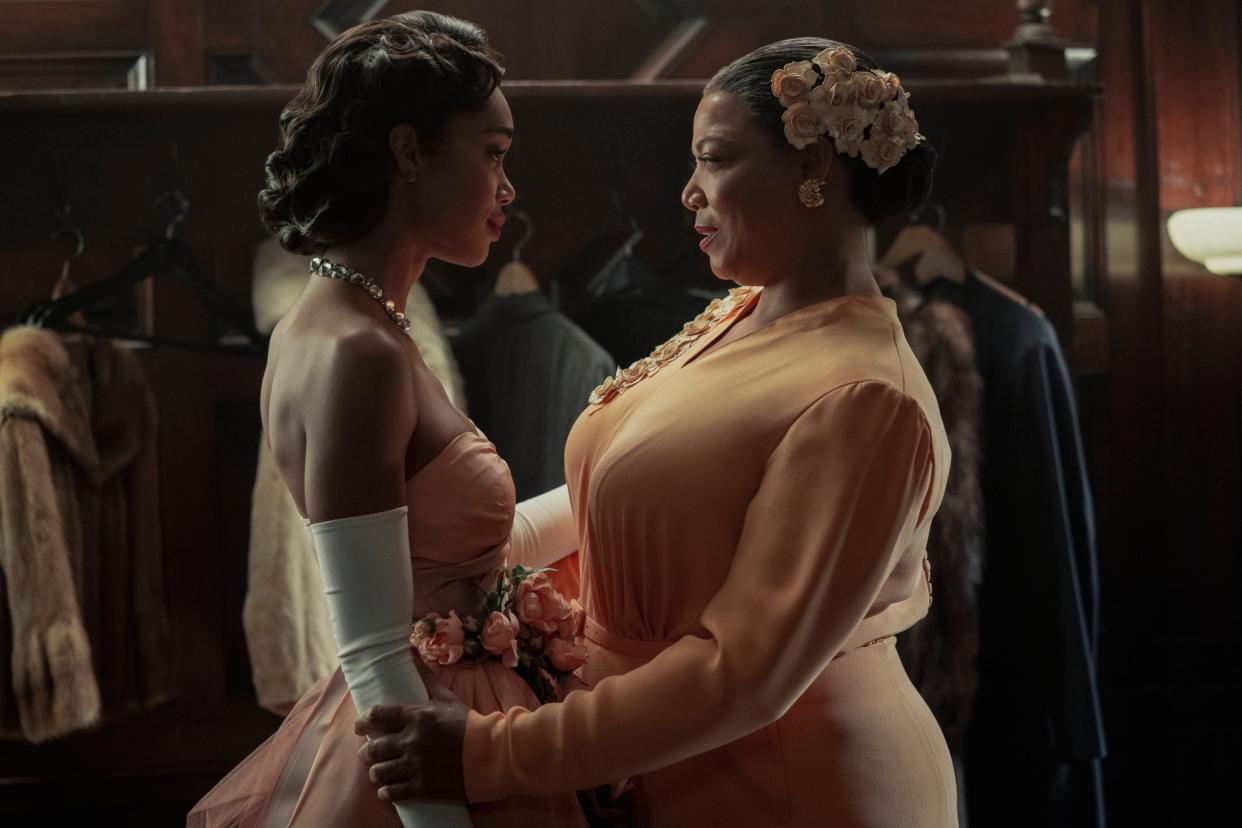Hollywood on Netflix: Who are the real-life stars of the 1940s-set series?

Ah, Hollywood: the place where dreams come true. For over a century, this Los Angeles district has been synonymous with the film industry, as people from around the world continue to flock to La-La Land in hope of making it in show business.
Now, a new Netflix series from Ryan Murphy (Pose, Glee, American Horror Story) looks to the golden age of cinema during the post-Second World War era of the 1940s. With the birth of the talking pictures, the industry was churning out stars left, right and centre, and Hollywood reimagines a world where actors of all races, genders and sexualities were given their chance to make it.
With a star-studded cast including Darren Criss, Patti LuPone and Holland Taylor, the limited series, which is available to stream on Netflix now, brings together fantasy elements with real-life characters. But who are the real stars of Hollywood?
Henry Willson – Jim Parsons
Appearing in his first TV role since the end of The Big Bang Theory in 2019, Parsons plays real-life talent agent Henry Willson. Willson was known for his ability to turn handsome nobodies into stars; he transformed Rock Hudson from a truck driver called Roy Scherer into Hollywood’s leading man. Along the way, he cultivated the trend for muscular “beefcake” actors, such as Tab Hunter and Chad Everett, which went on to define the era.
As Willson was known throughout the industry to be gay, the same was assumed of his clients, with one of his rare female actors saying “if a young, handsome actor had Henry Willson for an agent, it was almost assumed he was gay, like it was written across his forehead”. As his own sexuality became public knowledge, many of his clients distanced themselves from him, causing him to struggle with alcohol and drug addiction before he died of cirrhosis of the liver.
Rock Hudson – Jake Picking
At the height of his fame, few actors could match Hudson’s star power and success. Throughout his long career, he was known for playing romantic leads, starring opposite Doris Day in Pillow Talk, Love Come Back and Send Me No Flowers. However, behind the scenes, Hudson’s homosexuality was a poorly kept secret in the industry.
So desperate was he to keep himself in the closet that he married Willson’s secretary Phyllis Gates to keep up appearances of being straight. The pair’s marriage naturally dissolved after three years, with Hudson making the move to TV acting in the 1970s before his tragic, Aids-related death in 1985.
Hattie McDaniel – Queen Latifah
As the mentor to Laura Harrier’s Camille Washington in Ryan Murphy’s series, Hattie McDaniel seems to be the perfect woman to take a young African-American actor under her wing. The first black woman to sing on US radio, McDaniel barely gained credit for the endless work she did.
Starring in more than 300 films (of which she was only credited in 83), McDaniel won critical acclaim and was the first African-American actor to win an Academy Award for her star turn in Gone with the Wind. However, as the hotel where the ceremony took place had a segregation policy, McDaniel wasn’t allowed to attend the event and had to be snuck in through a side door after she won, only to be kicked back out again. Twenty-three years after her death, McDaniel was finally given the praise she deserved and was inducted into the Black Filmmakers Hall of Fame, later becoming the first black Oscar winner to be put on a US postage stamp.
Anna May Wong – Michelle Krusiec
Expertly making the jump from silent film to the “talkies”, Wong is widely considered to be the first Chinese-American movie star. The actor faced humiliation after losing out on playing Chinese character O-Lan in The Good Earth to Luise Rayner, a white actor who performed in yellowface, and won an Oscar for the performance.
Having long expressed her frustration at the stereotypical roles she was given to play, Wong went on to star in a number of B-movies that painted Chinese Americans in a positive light. However, during the Second World War, she allowed her career to take a backseat to focus on Chinese politics. Returning to Hollywood later, Wong shifted to TV appearances and in 1951 starred in the first US TV series with an Asian American lead, The Gallery of Madame Liu Tso.
Vivien Leigh – Katie McGuinness
Originating the roles of Scarlett O’Hara in Gone with the Wind and Blanche DuBois in the film adaptation of Tennessee Williams’ A Streetcar Named Desire, there are few actors more genuinely iconic than double Oscar-winner Vivien Leigh. Married to Laurence Olivier for 20 years from 1940 to 1960, she starred in multiple stage productions with her husband, but the pair were known to have a tumultuous relationship.
Leigh suffered from bipolar disorder and manic depression, described by Olivier as an “uncannily evil monster… with its deadly ever-tightening spirals”, and died of tuberculosis at the age of 53.

 Yahoo News
Yahoo News 
